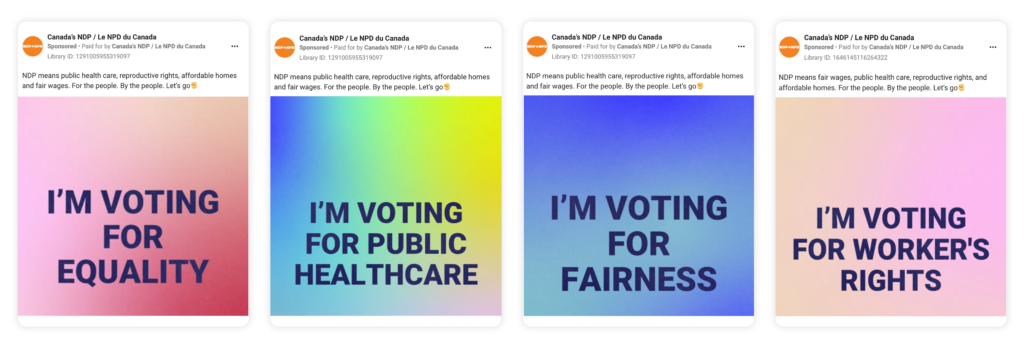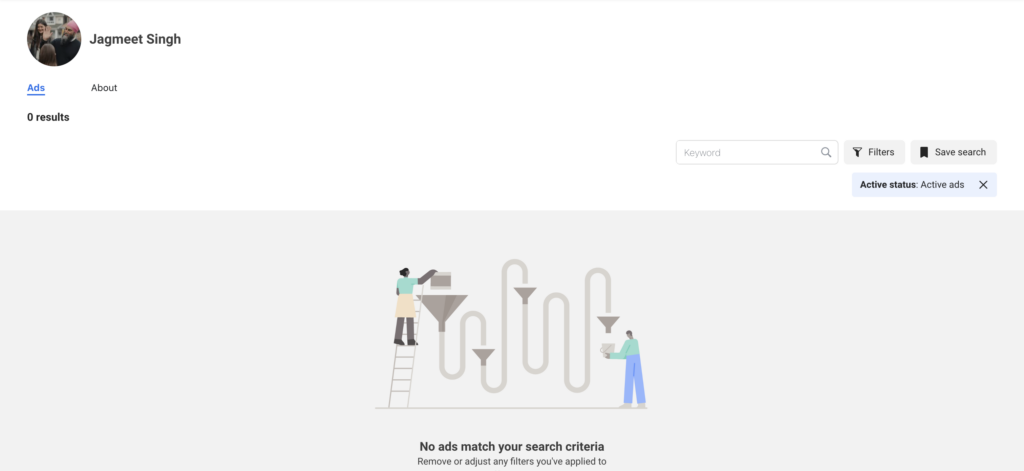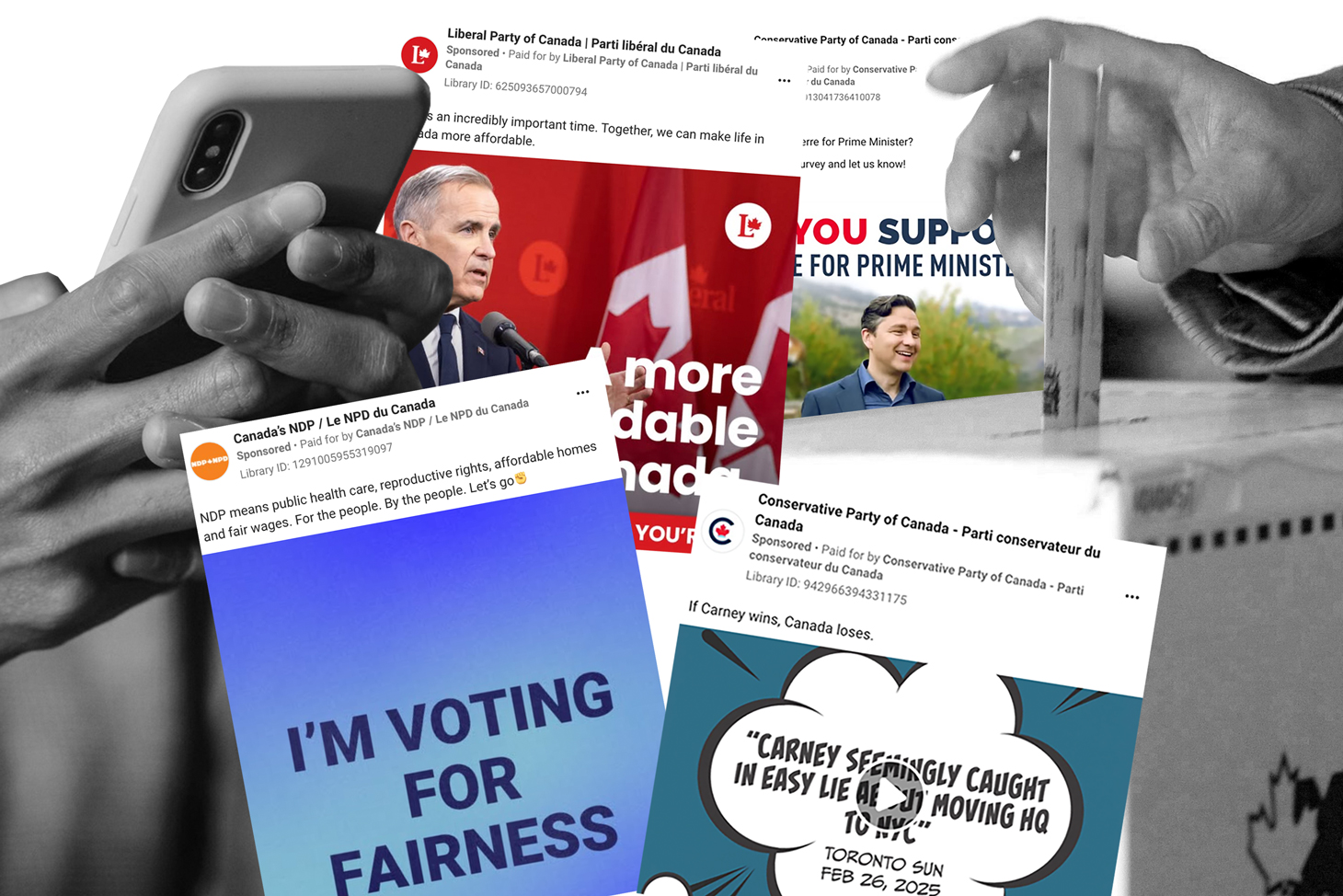Written by Zubin Sanyal, Principal.
The race is on to capture hearts and votes. What can the ads tell us?
Our 45th go at democracy is now fully underway.
I’m writing this on Monday, March 24th. I’m timestamping these updates so I’m not taken to task for whatever changes overnight and trust me, things will most certainly change overnight.
This election is just five weeks long, which fits these unusual times. Our “best friend” just strolled in with a big grin asking for the keys to our house, all while acting like they’ve been paying for every meal out…when we’ve been splitting the bill the whole time.
Things will move quickly, and our leaders want us to keep up with every tweet, speech, and handshake.
OK, deep breath. Let’s go…
The numbers
Mechanics first:
1. Ad platforms: Parties can buy ads directly on TV, radio, newspapers, news websites, or other online spaces (known as programmatic advertising). They can also buy ads on Facebook and Instagram.
Notice I didn’t say “Meta.” That’s because I find it important to distinguish Facebook and Instagram from Meta’s other platforms. On the ad side, Facebook and Instagram are joined at the hip: with a single click in the ad manager you can run the same ad on both. I have a suspicion that we will see a whole different set of tactics rolled out via WhatsApp and Threads over the coming weeks.
2. Party spending: Most parties have enough budget ceiling (around $30 million if they run a full slate and adjust for inflation) to cover more ads than they’ll likely want to buy.
3. Third-Party spending: Organizations seeking to promote a party, candidate or cause during the writ period have about ~$525,000 to spend, also subject to inflation tweaks.
That’s the technical side of things. But I’d encourage you to shift your focus away from the nuts-and-bolts like ad strategy, data crunching, and those constant rolling voter sentiment polls and zero in on the audio and visuals.
The rub
A more productive use of our time will be spent focusing on the emotion behind it all.
Canadians are feeling something. Maybe you feel differently than I do, or than a teacher in Winnipeg, a small-business owner in Kamloops, or a steelworker in Hamilton.
But we’re all feeling something, and that’s the rub of this election.
How will each party expertly navigate what their voters are feeling and convert that emotion into action at the polls.
And let’s not forget the emotional baggage driving each party over the next five weeks.
The Conservatives have spent years telling us Canada is broken, centering their message on Trudeau. Overnight, that hard work seems to mean a lot less. I can’t imagine how they feel. That’s tough to grapple with.
Meanwhile, the Liberals have spent their entire 2020s juggling one existential crisis after another: COVID, convoy protests, conflicts overseas, and (of course) the empire striking back. Suddenly, they’ve done a 180 in voter’s minds and are now campaigning with a (somewhat possible?) shot at keeping power. I can’t imagine how that feels either.
As for the NDP? Unsure! Curious to see what they’ll bring to the table.
The ads
Conservative Party of Canada | Pierre Poilievre
The Conservatives are running just about every type of ad you can imagine, except for fundraising. Considering their hefty lead under Poilievre’s leadership, that’s not exactly shocking, but it’s still worth noting. Their “everything, everywhere, all at once” broadcast approach builds on pre-writ momentum, with some ads dating back as far as October 2024.
But what do they want voters to feel? Anything but “Canada is broken.” Right now, the Conservatives are trying to balance their established narrative with enough anti-Carney spin to keep swing voters on board. We’ll see if their all-encompassing ad blitz can accomplish that.
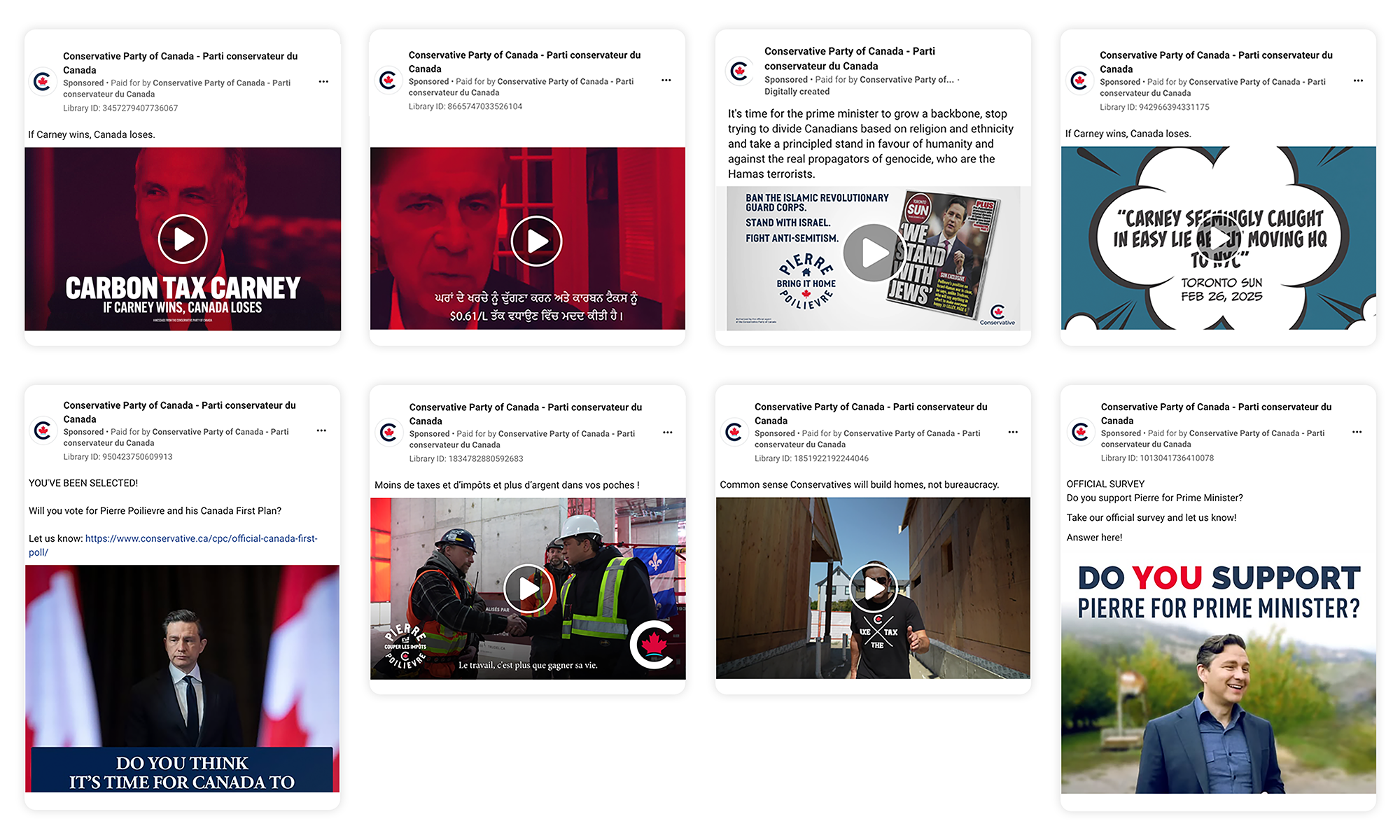
Interestingly, Pierre Poilievre’s page is running only one type of ad: event sign-ups.
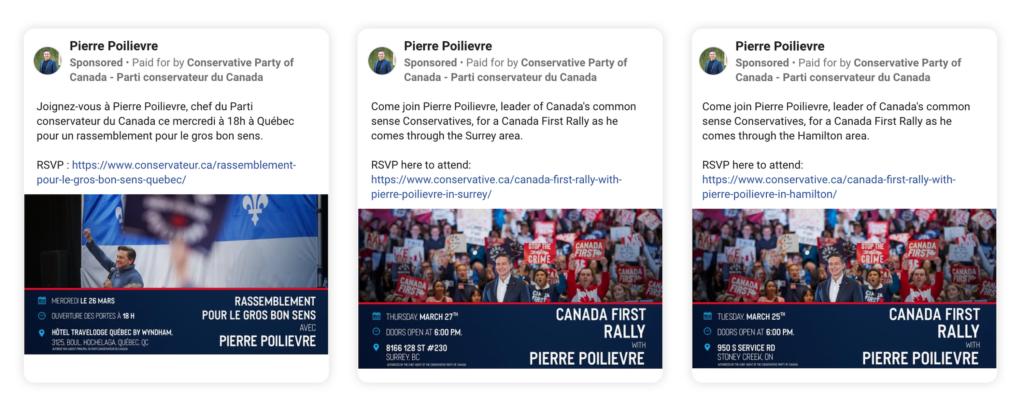
Liberal Party of Canada | Mark Carney
The Liberals are focusing on what they do best: contact acquisition and fundraising. Two straightforward yet critical elements for mobilizing their base and winning the election. A quick glance at their current ads reveals that each one funnels back to these two pivotal actions.
What are these ads supposed to make people feel? It all centers on Carney’s ability to “meet the moment.” Ads on both his own page and the Liberal Party’s repeatedly spotlight his readiness and plan to guide Canadians through uncharted territory. Time will tell if this message has staying power in an election that’s shifting by the hour.
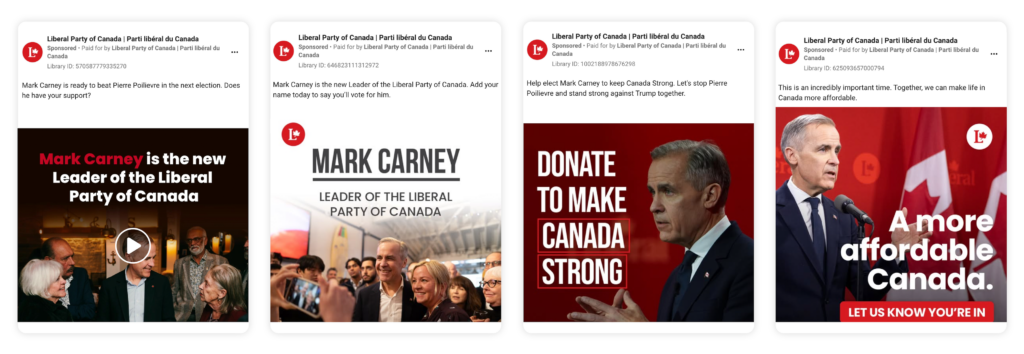
New Democrats | Jagmeet Singh
The NDP has kicked off the campaign by focusing on issue-based message testing, but there’s one notable absence: their leader. Jagmeet Singh’s page has no active ads in Meta’s ad library at the time of penning this update. It’ll be worth watching how their strategy evolves, especially given where polls and pundits have them positioned in this unusual race.
The feeling? Unsure! There’s little here to draw conclusions. The next few days should provide more clarity.
